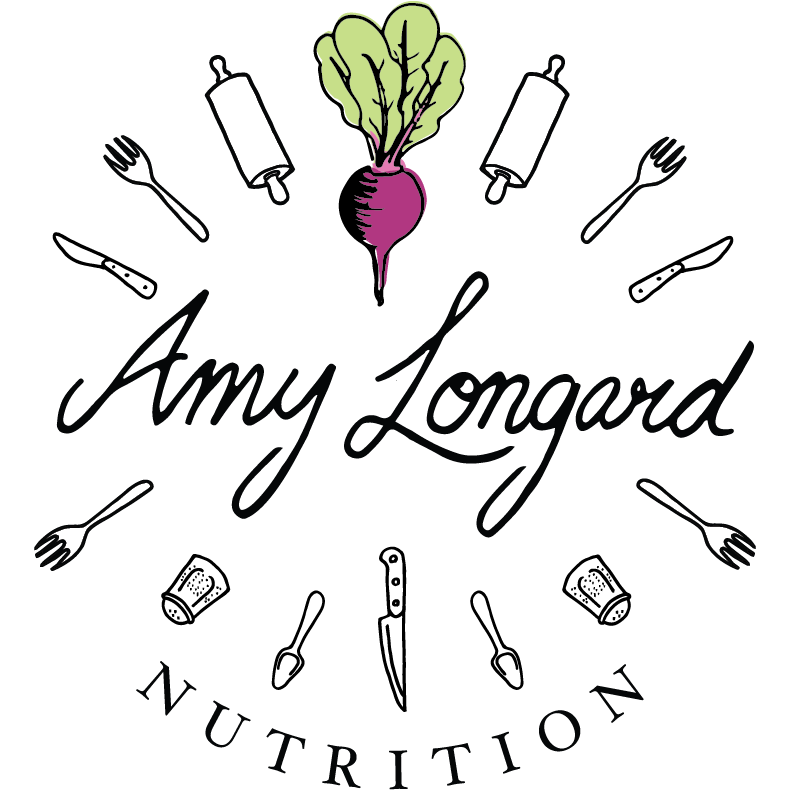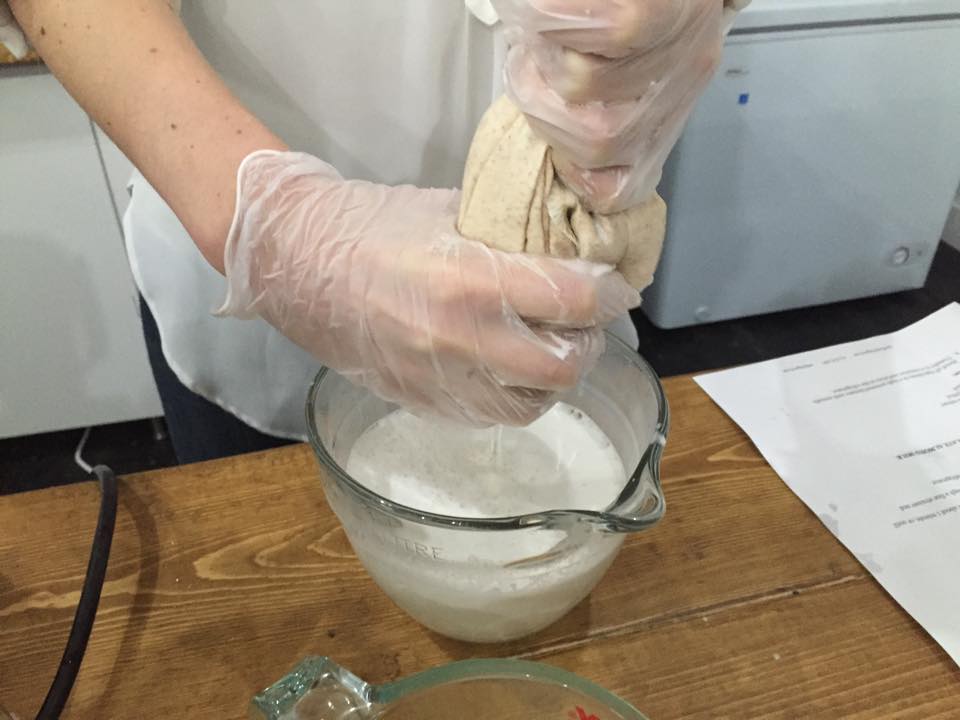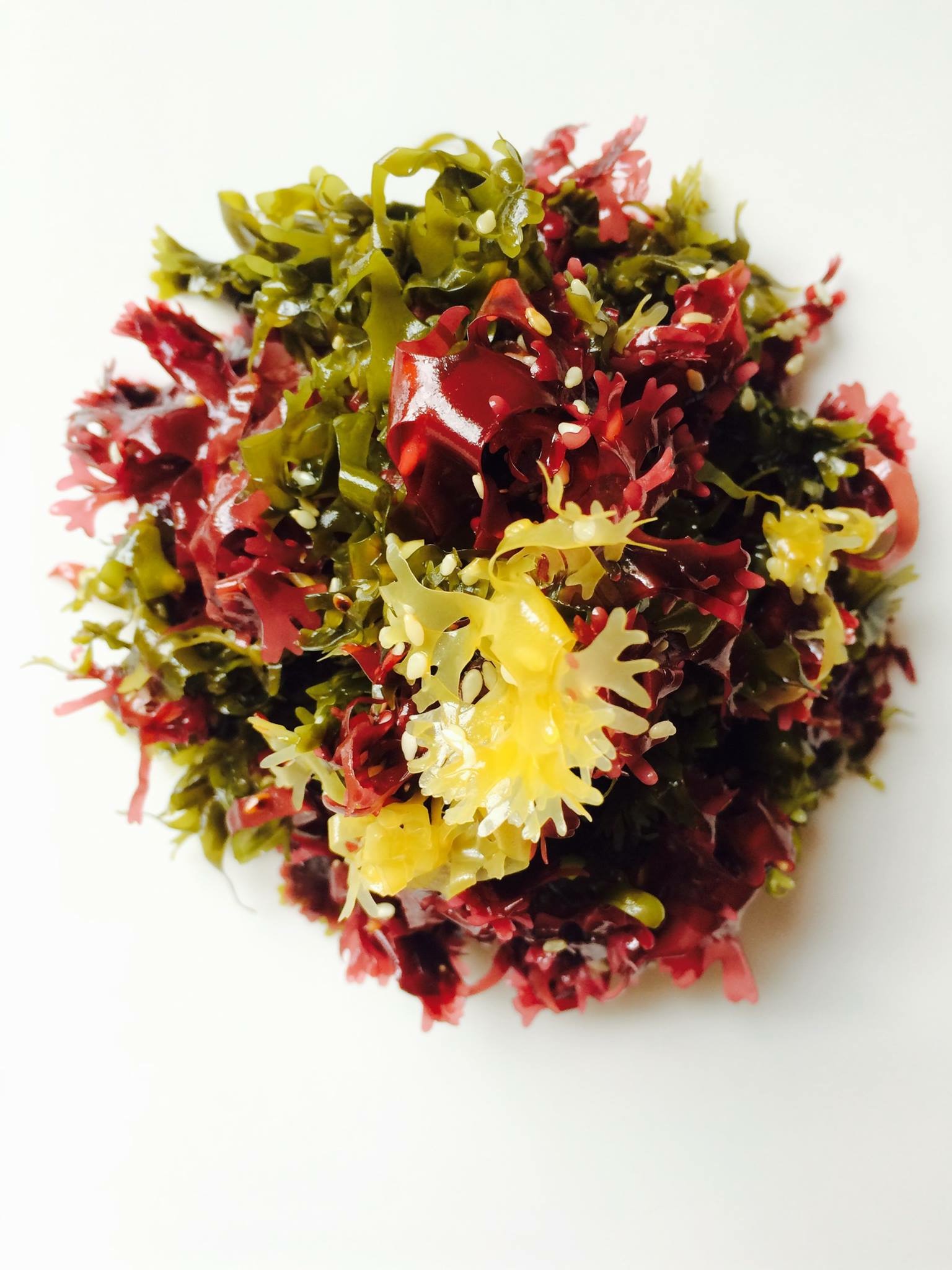This recipe was a long time in the making and I’m so happy that I waited until now to post it as series of serendipitous events has led me to create this fantastic Chickpea Melt recipe. If you if don't want to hear the story, scroll down to the bottom for the recipe (I won’t take offense, I promise). However, for those of you interested in how this recipe came to be, allow me to explain…
About 3 years ago I was at Pressed, a café here in Ottawa, and tried their chickpea salad sandwich. I don't think it's on the menu anymore, but at the time, the owner Jeff was kind enough to share the recipe with me. Since then, I’ve made the recipe countless times for myself, for friends or for yoga retreats, and over the years I’ve refined it to my liking.
Flash forward to a few weeks ago, I attended a wine and cheese party out in Alexandria, Ontario at the Zengarry HQ. While there, I was speaking with Lynda, the owner and founder, and mentioned to her that I'd love to make a healthy appetizer for the holiday featuring chickpea salad and one of her cheeses. She happily obliged and handed over a round of her cashew-based Gruyère.
At the Zengarry event also I met local vegan pastry chef, Kate of Kitty Kate Confections, and was super impressed by her beautiful and delicious macarons made using aquafaba. For those of you who haven't heard of aquafaba, it’s basically just chickpea brine. Yep, the liquid from chickpeas that you usually pour down the drain! Turns out somebody came up with the genius idea of using chickpea brine as an egg replacer and it actually works. In fact, it works so well that vegan chefs and non-vegan chefs alike have begun using it as an egg substitute for making meringues, frothy egg whites on top of drinks (like pisco sour), in cakes and other baked goods, mayo and so on. I’ve observed the magic of aquafaba in the past since my mom has been experimenting with it and has had a lot of success, but I was never really interested in it (not sure why), until recently!
A few days ago at Loblaws cooking lesson, inspired by my mom and Kitty Kate Confections, I tried making aquafaba meringue (I followed this recipe). It’s almost unbelievable that chickpea brine, with a bit of cream of tartar, sugar, and vanilla could whip up so beautifully fluffy in a stand blender creating peaks (just like egg whites) and holding its shape and texture (likely better than egg whites). Everybody in attendance was wowed by this incredible mock meringue and I was further inspired to play around with aquafaba.
A few days ago a light bulb went off. Since I was already planing to make chickpea salad melts for my blog, why not make aquafaba mayo to go along with it? I found several recipes online. I tried one, and it failed horribly. It was too runny, too yellow looking, and way too salty (it was not a lost cause though; I have since been reformatted into salad dressing). Then, I had a look at the Oh She Glows recipe, and it was a good starting point. However, I ended up altering it to make an aioli (garlic mayo) and I was so pleased with the results.
All of that to say, getting to this point was a process of sharing, learning, research, trial and error, and I hope you enjoy this yummy holiday appetizer. If you’re reading this and it's not the Holidays, or if you aren’t in need of an appetizer, that’s okay. The Chickpea Salad recipe goes beautifully in sandwiches or wraps, on a bed of leafy greens, or even eaten as a dip with crackers.
If you want more information on aquafaba check out the Aquafaba Hits and Misses Facebook page. It's mecca for aquafaba aficionados. Or simply scroll down for the full step-by-step recipe. I hope you enjoy it!
CHICKPEA CROSTINI MELTS WITH ZENGARRY GRUYÈRE
Chickpea Salad:
Yields just under 5 cups.
2 15 oz. cans of chickpeas or 3 cups cooked chickpeas, drained and rinsed (reserve 3 Tablespoons of the brine for Aquafaba Aioli)
2/3 cup homemade Aquafaba Aioli (see below) or store bought vegan mayo
2/3 cup celery (about 1 or 2 ribs of celery), minced
1 bunch green onions (approximately 8), chopped
1/3 cup minced dill pickle
2 tablespoon nutritional yeast, optional
2 tablespoon tamari, soy sauce or coconut aminos
1 heaping tablespoon kelp or dulse powder
Freshly ground black pepper, to taste
1 large handful, fresh dill, roughly chopped, divided (some for the salad + some for garnish)
Directions:
In a medium bowl, mash the chickpeas coarsely with a fork or potato masher. Mix in the remaining ingredients (except the dill). Once evenly combined, sprinkle in the dill and mix again. Transfer to a large airtight container. This may be stored in the fridge for up to 1 week.
Note: if you’re using store bought mayo and not the aquafaba aioli, you’ll want to add 1 small clove of minced garlic to the mix.
Aquafaba Aioli:
Yields approximately 1 cup
3 tablespoons aquafaba (chickpea brine from canned or homemade chickpeas)
1 teaspoon lemon juice
1/2 teaspoon apple cider vinegar
1/4 teaspoon sea salt
3/4 cup grape seed oil (or other neutral oil)
1 small clove of garlic, minced
Directions:
To make the aioli, you’ll need an immersion blender, or a blender with a narrow container. If using an immersion blender, you’ll also need a large jar or a deep container/mixing jug that’s big enough to fit your immersion blender. I personally used immersion blender and 5 cup mixing jug.
To begin, add the aquafaba, lemon juice, apple cider vinegar, and sea salt to the container or jug. Blitz these ingredients for a few seconds until you start seeing a bit of froth. Once your mixture is frothing, start pouring in the oil. Drizzle in the oil, very slowly, as you continue to blitz the mixture, allowing the oil to emulsify.
Within a minute, the mixture should begin to change colour and texture, very similar to that of mayo. Once you’ve added almost all the oil, add in the minced garlic and continue to process to ensure that the garlic mixes in nicely. You’ll want to reserve 2/3 cups of your Chickpea Aioli for the Chickpea Salad, and transfer the rest to a container and store it refrigerator for up to 1 week.
To Assemble Your Chickpea Crostini Melts:
Ingredients:
1 baguette of your choice, cut into 1/4 inch slices (I used an organic sourdough)
1 round of frozen Zengarry Gruyère
Chickpea Salad
Directions:
Set your oven to broil. As it’s heating up, grab a baking sheet. Place several baguette slices on to your baking sheet, then spread 1 heaping tablespoon of Chickpea Salad on to the sliced baguette. Next, grate about a quarter of your frozen Zengarry Gruyère (grate more later, if needed). I prefer the larger grater setting on a box grater, but you could also use micro-plane or small grater. Use about 1/2 teaspoon of the grated Gruyère to top of each baguette. Then put the baking tray in to the oven and broil for 4 to 5 minutes, watching closely to not overcook or burn your baguettes.
Once the baguettes are nicely crisp, and the Gruyère has melted and is slightly bronzed, remove the baking sheet from the oven. Garnish your Chickpea Crostini Melts with a bit of fresh dill and serve immediately.
Note: You may want to do this in small batches (about 8 to 10 baguettes at a time) so that you can serve and enjoy warm Chickpea Melts strait from the oven. Use as much or as little of the Chickpea Salad and Gruyère as you need based on the number of people you’re serving. Any leftovers can be enjoyed later on for meals or snacks.




































































